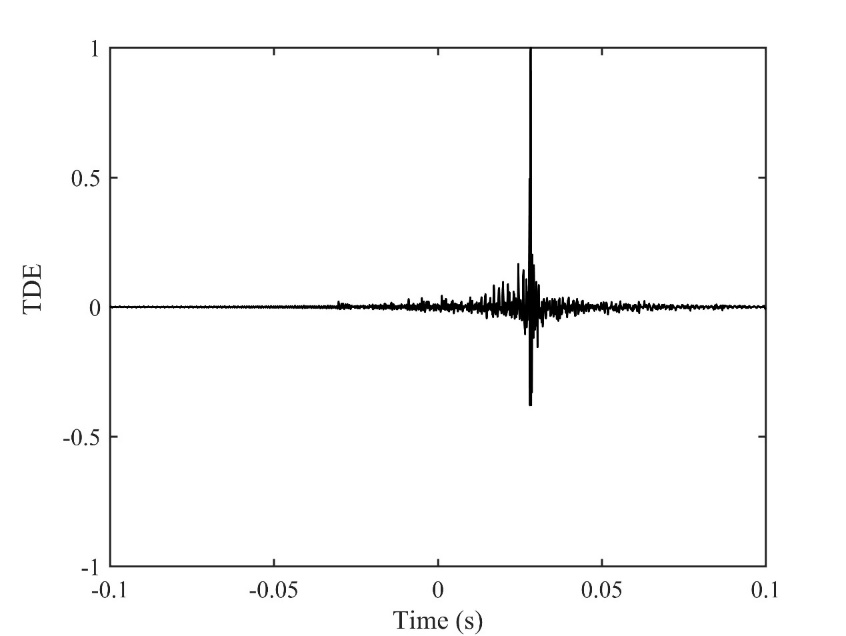Urban pipelines are usually seen as an environmentally friendly means for transporting fluids and gases. Leakage in buried pipeline always results from aging water supply facilities, poor management, and inappropriate excavation works. More than 32 billion cubic meters of water is lost in the distribution systems, which accounts for 35% of the total water supply across the world.
Great efforts have been made to improve leak detection methods. The cross-correlation methods of where leak noise is measured at either side of a suspect leak have proved to be effective and widely used to locate leaks in buried water pipelines for many years. However, it should be noted that statistical characteristics of both leak and background noise signals cannot be obtained precisely in various practical situations, which may hinder the effectiveness of correlation methods by passive means.

Figure 1. Schematic of leak detection measurements in water distribution pipes. (Image by IOA)
Recently, researchers from the Institute of Acoustics (IOA) of Chinese Academy of Sciences proposed an adaptive phase transform (ADPHAT) method for pipeline leakage detection. It has been expanded on the conventional least mean square (LMS) algorithm, and developed a new way to calculate the time delay of the sensor signals.
The paper entitled “Adaptive phase transform method for pipeline leakage detection” was published online in Sensors.
The ADPHAT method is based on the propagation model of leak signals in buried water pipes. Two impulse response functions are first obtained by using the LMS algorithm, and are subsequently transformed into the frequency domain to result in a new frequency response function that only contains the phase information directly related to the time delay.
The main advantage of this approach over the existing correlation-based leak detection methods is that it does not rely on the selection of pre-filtering/frequency weighting of input signals, and potentially could interpret the similarity between two sensor signals in a low signal-to-noise ratio (SNR).
Simulations on plastic water pipes demonstrated the effectiveness of the proposed method for locating leaks even in a low SNR environment.
Field tests were further conducted and confirmed the improved performance compared to the conventional LMS algorithms for time delay estimation, which was particularly well-suited to pipeline leakage detection.

Figure 2. The proposed ADPHAT algorithm for TDE. (Image by IOA)
Funding for this research came from the National Natural Science Foundation of China (No. 11774378).
Reference:
MA Yifan, GAO Yan, Michael J. Brennan, Fabricio C.L. Almeida, YANG Jun. Adaptive phase transform method for pipeline leakage detection. Sensors 2019, 19(2), 310. DOI: 10.3390/s19020310.
Contact:
WANG Rongquan
Institute of Acoustics, Chinese Academy of Sciences, 100190 Beijing, China
E-mail: media@mail.ioa.ac.cn